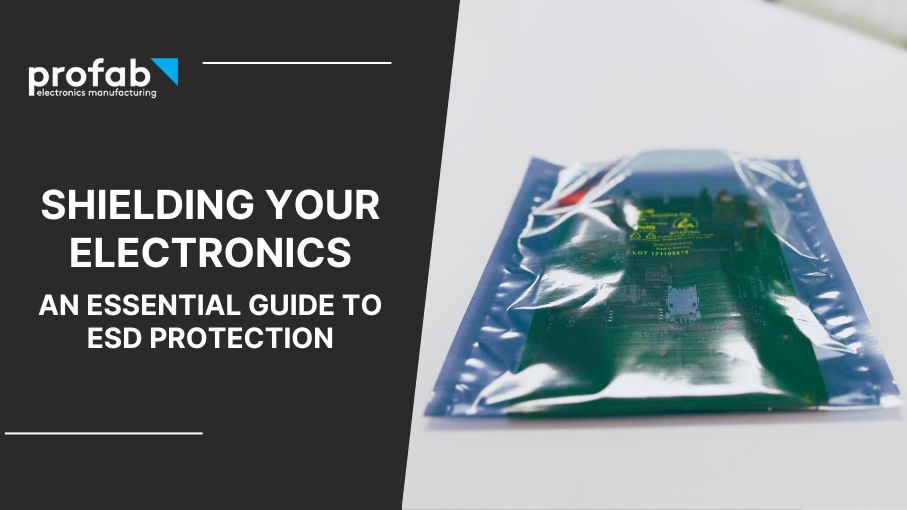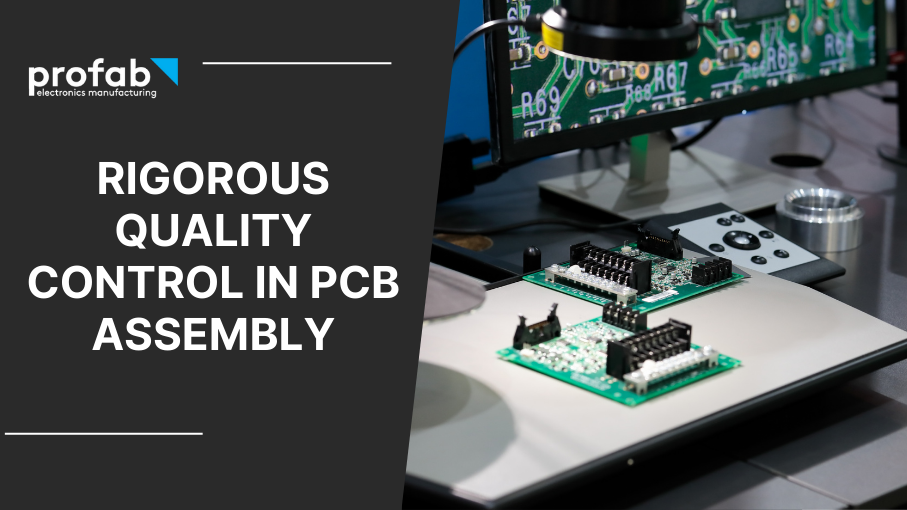
Shielding Your Electronics: An Essential Guide to ESD Protection
Proven Strategies to Safeguard Your PCBs from Electrostatic Discharge Damage
At a Glance: Essential Insights
ESD Damage: Electrostatic Discharge (ESD) can damage PCBs during any stage of production, including assembly, handling, testing, and shipping, causing them to deteriorate over time.
ESD Occurrence: ESD occurs when two nearby objects with different voltage potentials release a rapid flow of electricity, which can damage the internal circuitry of a component and shorten the life of the circuit board.
ESD-Safe Protective Wear: Ensuring all personnel wear ESD-safe clothing, including jackets and shoes, can help prevent the buildup of static and provide a path to the ground.
ESD-Specific Floor Tiles: ESD flooring contains elements like carbon and graphite, providing electrical conductivity to prevent workers from generating a static charge.
Grounded Workstations: Designing workstations with electrostatic dissipation in mind can limit voltage generation and protect sensitive components.
ESD Packaging: Static shielding bags are the only type of packaging that protects components from external static generation, unlike regular pink or blue anti-static bags.
ESD Control Program: Developing a comprehensive ESD control program involves training personnel, implementing environmental controls, conducting regular audits, and continuously improving processes.
ESD Training and Awareness: Proper ESD handling procedures must be taught to all personnel to minimize the risk of ESD damage.
Environmental Controls: Controlling humidity levels and maintaining a clean work area can significantly reduce the risk of ESD damage.
ESD Auditing and Monitoring: Regularly monitoring and auditing your ESD control program ensures that all preventative measures are working effectively and identifies potential weaknesses in your processes.
Understanding Electrostatic Discharge
Electronics manufacturers must take proactive measures to prevent Electrostatic Discharge (ESD) damage at every stage of production, including assembly, handling, testing, and shipping. PCBs are susceptible to ESD damage, which can accumulate on any surface, causing them to deteriorate over time. Since ESD damage isn't immediately visible, it's crucial to adhere to proper manufacturing protocols to prevent potential issues.
ESD occurs when two nearby objects with different voltage potentials release a rapid flow of electricity. Whenever a PCB comes into close proximity to another charged object, there's a risk of ESD damage. This contact can damage the internal circuitry of a component and ultimately shorten the lifespan of the circuit board.
Strategies for Preventing Static Damage
Electrostatic charges can accumulate on any surface or item, including clothing. Manufacturers can implement several steps to prevent discharge during production:
ESD-Safe Protective Wear
During assembly, all personnel should wear ESD-safe clothing, including jackets and shoes. ESD clothing is designed with conductive fibers embedded within the fabric to prevent the buildup of static and provide a path to the ground.
ESD-Specific Floor Tiles
Friction between shoe soles and the floor can generate static electricity. ESD flooring contains elements like carbon and graphite, which provide electrical conductivity. This ensures that workers don't create a static charge, whether they're at their station or moving around the facility.
Grounded Workstations
ESD-safe work surfaces are typically made from durable materials such as rubber, vinyl, or laminate. By designing workstations with electrostatic dissipation in mind, manufacturers can limit voltage generation.
ESD Packaging
When it comes to ESD-safe packaging, there's a common misconception that conductive, shielding, and dissipative bags all prevent static damage. While regular pink or blue anti-static bags are made with insulative materials, they only prevent static generation on the package itself. Static shielding bags are the only ones that protect components from external static generation.
It's essential to recognize that packaging circuit boards in static-controlled containers isn't sufficient to protect the product. Electronics manufacturers must proactively work to prevent ESD damage throughout the entire production process. By educating and training all personnel in component handling and storage, manufacturers can properly ground equipment and prevent static buildup, ensuring the longevity and reliability of their electronic products.
Implementing an ESD Control Program
An effective Electrostatic Discharge (ESD) control program involves developing a comprehensive plan to minimize the risk of ESD damage throughout the entire manufacturing process. Here are some crucial steps to consider when establishing an ESD control program:
ESD Training and Awareness
Ensuring all personnel are trained in proper ESD handling procedures is a critical first step in preventing ESD damage. This includes understanding the risks associated with ESD, proper handling of sensitive components, and the correct use of ESD-safe tools and equipment.
Environmental Controls
Maintaining the right environmental conditions can significantly reduce the risk of ESD damage. This includes controlling humidity levels, as higher humidity can help dissipate static charges. In addition, keeping the work area clean and free of dust and debris can also reduce the chances of ESD buildup.
ESD Auditing and Monitoring
Regularly monitoring and auditing your ESD control program will help identify potential weaknesses in your processes and ensure that all preventative measures are working effectively. This includes checking the performance of ESD-safe equipment, workstations, and flooring, as well as ensuring that personnel adhere to proper ESD handling procedures.
Continuous Improvement
As technology evolves and new insights emerge, it's essential to continually update and improve your ESD control program. Stay informed about the latest ESD prevention techniques and best practices, and be proactive in implementing changes to keep your program current and effective.
Profab Electronics: Prioritizing ESD Protection
At Profab Electronics, we take Electrostatic Discharge (ESD) prevention very seriously. As a trusted family-owned business that offers a full range of contract manufacturing services, we understand the importance of protecting the integrity and performance of electronic components throughout the manufacturing process.
Our commitment to ESD protection is evident in our state-of-the-art facility, which incorporates industry-leading ESD-safe equipment, flooring, and workstations. We have also developed a comprehensive ESD control program, which includes ongoing training and education for our highly skilled personnel. This ensures that everyone on our team is knowledgeable about proper ESD handling procedures and understands the importance of maintaining a safe working environment.
In addition to our stringent ESD control measures, we regularly audit and monitor our processes to identify potential areas for improvement. This commitment to continuous advancement allows us to stay ahead of the curve and adapt to the latest ESD prevention techniques and best practices.
At Profab Electronics, we take pride in delivering high-quality, reliable electronic products to our clients across various industries. By prioritizing ESD protection and adhering to strict manufacturing protocols, we ensure that every product we produce meets the highest standards of performance and durability.
About Profab Electronics
Profoundly embedded in the electronics manufacturing sector, Profab Electronics has been steadfast in its commitment to deliver excellence for over three decades. Our unparalleled experience, fortified by our stringent quality standards, positions us as a trusted partner in the realm of Electronics Manufacturing Services (EMS).
We're an ISO 9001 and AS9100 certified company, and our adherence to these globally recognized standards attests to our unyielding quest for quality. Our team comprises experts who hold formative training on the latest IPC standards, ensuring that we consistently produce electronic products of the highest caliber.
Our proficiency lies in PCB assembly, offering a spectrum of services ranging from Surface Mount (SMT) to Through-Hole Assembly. From the initial stages of prototyping to high volume pcb assembly, we offer comprehensive solutions to meet client requirements.
At Profab Electronics, we synergize our expertise and experience to deliver high-quality electronic products. Our unwavering commitment to quality, innovation, and customer satisfaction has established Profab Electronics as a leader in the electronics manufacturing industry. Trust us to bring your technological visions to life.
Latest Posts

Learn about our state-of-the-art Surface Mount and Through-Hole Technologies, sophisticated soldering processes, and rigorous quality control methods that define today's industry standards.

Learn about our advanced component placement, solder paste printing, and automated inspection systems that revolutionize the assembly process.

Discover how our adherence to ISO 9001 and AS 9100 standards, IPC solder training, and meticulous inspection processes ensure the precision and accuracy of every PCB we produce, underpinning our unwavering commitment to quality.